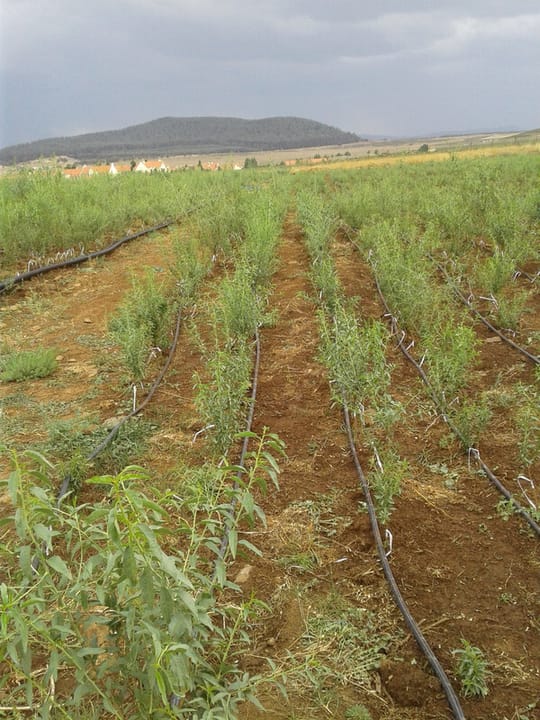Tapping the Market for Blanched Almonds: A Value-Added Opportunity for Rural Moroccan Communities?

By Ida Sophie Winter
September 28, 2015
The following blog post details how the High Atlas Foundation is helping rural Moroccan communities reap the benefits of value-added almond processing.
The High Atlas Foundation and 693 rural High Atlas families have produced 100 tons of almonds this year, many of which are grown on over 100 hectares of certified organic land. This and future almond harvests will provide an additional $300 to $450 per year to families whose average income is around $900.
The majority of this year’s almonds will be sold whole, but HAF is considering value-added processing, like blanching, to tap greater socioeconomic benefits for rural Moroccans.
Blanched almonds are often used in baking and cooking, as they produce lighter-colored baked products and do not leave husks in meals. These almonds can be sold whole, slivered, sliced, halved, chopped and pulverized (into flour or butter).
Two of the world’s largest almond importers, Spain and Germany, primarily use almonds in confectionary industries. U.S. demand for almonds increases every year, and is centered on snack and home baking use. The University of California predicted in 2005 that improved market conditions in developing countries would increase demand for almonds, especially in confectionary and snack products. It also predicted that growing Middle Eastern populations and demand for foreign food in the U.S. would increase demand for confection-grade almonds.
Blanched have lower phytic acid levels than natural almonds, making them a healthier option for individuals deficient in iron, zinc, magnesium, copper and calcium. They may also contain fewer allergens than natural almonds, as their allergen binding properties have been reduced through heat treatments.
Almond skins and blanch water, both byproducts of blanching, can be profitable for health and cosmetic markets. Polysaccharides found in almond skins, which make up four to eight percent of total shelled almond weight, improve various aspects of colonic function, including regularity of bowel movements, digestive speed, metabolism, bacterial balance and general colonic health. They can therefore be marketed as a source of dietary fiber.
Flavonoids and phenolic acids found in blanched almond skins, which carry around 80 percent of almonds’ total phenolics, may reduce human risk of chronic inflammatory disease and ageing disorders, and can thus be used for cosmetic applications.
The same flavonoids also contain phytoalexins, which protect kernels against bacteria and fungi, and can control oxidative processes in food products. Antimicrobial properties protect against pathogens like listeria, staphylococcus and salmonella.
Blanch water contains high levels of antioxidants and polyphenols, and may be used in nutraceutical and pharmaceutical industries due to anti-free radical and photo oxidative (sun damage) properties.
Right now, almond skins and blanch water are mainly used in cattle feed and to produce energy in gasification plants. If not used, they become waste fill, meaning processors are literally throwing valuable material into the trash.
HAF and local communities can increase profit for Moroccan farmers and reduce pressure on landfills by sustainably processing blanched almonds. By pursuing value-added options, HAF and rural communities can ultimately raise standards of living across Morocco.
About the Author:
Ida Sophie Winter is a project manager with the High Atlas Foundation. She is also a student at the Missouri School of Journalism, and spent the 2014-15 academic year in Ifrane, Morocco.
Follow HAF on Twitter @HafFdtn or like us on Facebook
Learn more at www.highatlasfoundation.org
For more information please contact: HAF@highatlasfoundation.org ; +212 (0) 5 24 42 08 21